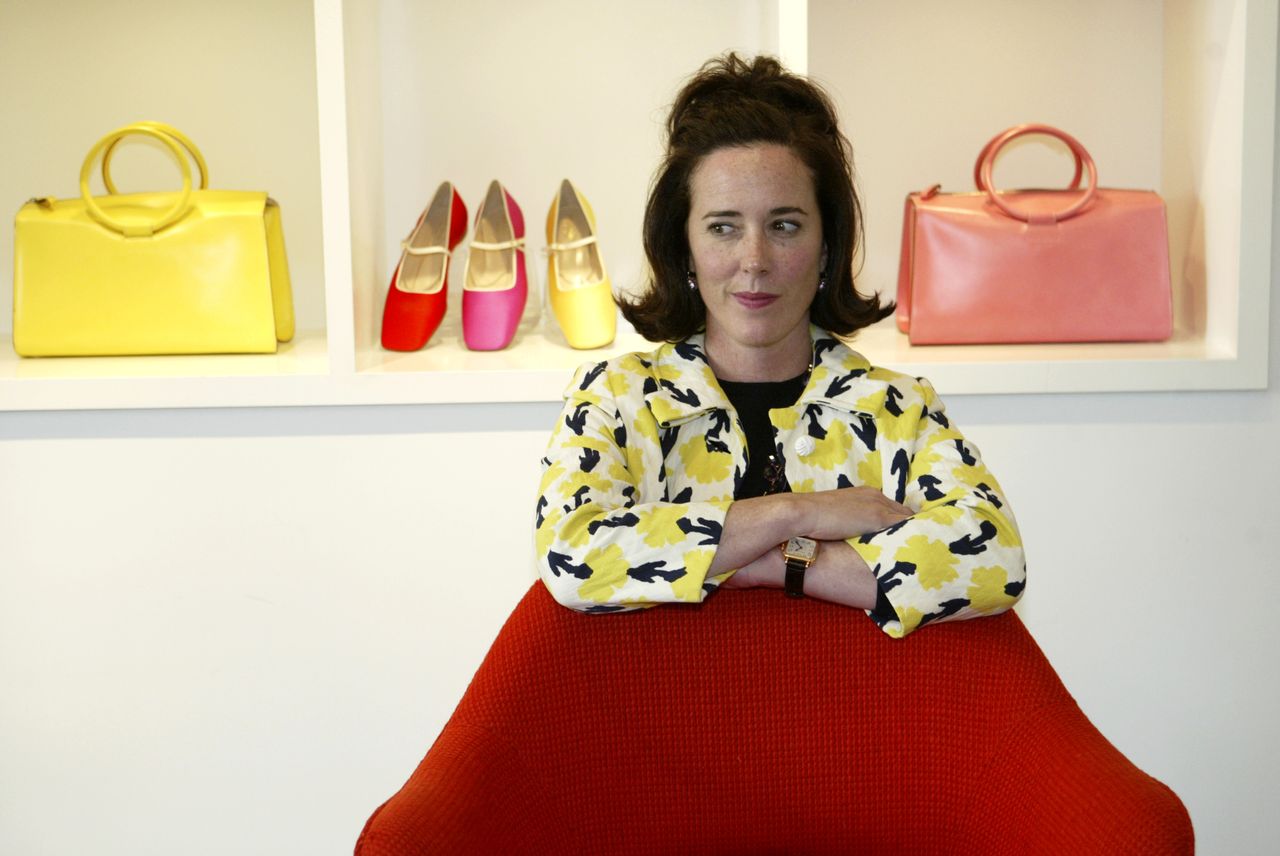The revolutionary Kate Spade
Women of all shapes and sizes and races bought Kate Spade. This was truly revolutionary.


To get my first Kate Spade handbag, I had to go through a secret door, walk down a flight of rickety steps, and cut across some sort of a courtyard that reeked of fish, before pushing my way into a tiny back room, already stuffed with other women looking for the perfect Chanel, Dior, or Prada to dangle from their arm.
All of this rigmarole wasn't even for the real thing — I walked away from that shady Canal Street storefront with a knockoff, but I was 20, it was my first time in New York City, and I didn't care. I had longed for one of Kate Spade's iconic boxy nylon bags (the Sam) since my high school days, when I thought they were the height of effortless sophistication, and as a college student whose income came courtesy of babysitting, editing for the campus newspaper, and tutoring my hairdresser's daughter, I wasn't going to get an authentic Sam anytime soon. I did make myself a promise, though — one day, I would have a real Kate Spade.
From the beginning, Kate Spade bags were simple, yet stylish. Spade started the brand because, as an accessories editor at Mademoiselle, she knew what the perfect handbag looked like — it just didn't exist, and she had to design it. She launched the company in 1993 with six styles that managed to be both modern and timeless, and it took off from there. In 1998, the brand had $28 million in sales.
Subscribe to The Week
Escape your echo chamber. Get the facts behind the news, plus analysis from multiple perspectives.

Sign up for The Week's Free Newsletters
From our morning news briefing to a weekly Good News Newsletter, get the best of The Week delivered directly to your inbox.
From our morning news briefing to a weekly Good News Newsletter, get the best of The Week delivered directly to your inbox.
You knew a Kate Spade bag back then when you saw it — not just because of the shape, but also thanks to the label that was sewn to the outside, a long black rectangle with "kate spade new york" in white letters. That tipped you off that this bag was both functional, with its separate compartments perfect for storing all of your going out essentials, and sophisticated.
Young women like me looked at those bags as more than just something that held your keys and lipstick. They were aspirational — instead of being out of reach like a ridiculously expensive Prada purse, if you saved your dollars long enough, you too could carry a Sam. Women of all shapes and sizes and races bought Kate Spade, women who were just as comfortable holding court at a cocktail party as they were giving orders in the office. You could go to a restaurant and see a patron walk out with the same purse as the bartender mixing drinks. So much of the fashion world is about looking down on others, but when you met someone else with a Kate Spade bag, you looked each other in the eye.
The Kate Spade brand of today isn't the Kate Spade of the late 1990s and early 2000s. In 1999, the Neiman Marcus Group paid Spade and her husband, Andy, $34 million for a 56 percent stake in the company, and then the entire company was sold to Liz Claiborne Inc. in 2006 (in 2017, it was bought by Tapestry, Inc. for $2.4 billion). In the early days, Kate Spade focused on handbags, but the Kate Spade empire has grown to include everything from bedding to china to perfume. A lot of the patterns are whimsy, with lobsters adorning purses on sale in the summer and penguins taking over in the winter. "Glitter is my favorite color" is one of the brand's new favorite sayings, as is "Live colorfully."
When news of Kate Spade's death emerged on Tuesday, it hit hard. When you carry a handbag every day that has someone else's name on it, you start to feel like you know them, and social media lit up with people remembering the first time they bought a Kate Spade purse, and what her designs meant to them.
Sign up for Today's Best Articles in your inbox
A free daily email with the biggest news stories of the day – and the best features from TheWeek.com
Kate Spade will be remembered for not only shaking up the fashion industry and being a huge success, but also for making fun yet classic pieces that instantly upped your level of sophistication when you carried them. It's impossible not to feel more confident while walking down the street with one of her bags.
How do I know this? More than 10 years after my trip to Canal Street, I can happily report that my knockoff was a one and done, and I now own Kate Spade handbags and wallets that I purchased from legitimate stores. They are all from the post-Kate Spade era of the company, but obviously had she not put down the foundation, those items wouldn't exist.
Thank you, Kate, for creating a company that is unabashedly pro-women, and giving us designs that add a little extra oomph to the everyday.
Catherine Garcia has worked as a senior writer at The Week since 2014. Her writing and reporting have appeared in Entertainment Weekly, The New York Times, Wirecutter, NBC News and "The Book of Jezebel," among others. She's a graduate of the University of Redlands and the Columbia University Graduate School of Journalism.
-
 Today's political cartoons - March 29, 2025
Today's political cartoons - March 29, 2025Cartoons Saturday's cartoons - my way or Norway, running orders, and more
By The Week US Published
-
 5 tactically sound cartoons about the leaked Signal chat
5 tactically sound cartoons about the leaked Signal chatCartoons Artists take on the clown signal, baby steps, and more
By The Week US Published
-
 Roast lamb shoulder with ginger and fresh turmeric recipe
Roast lamb shoulder with ginger and fresh turmeric recipeThe Week Recommends Succulent and tender and falls off the bone with ease
By The Week UK Published
